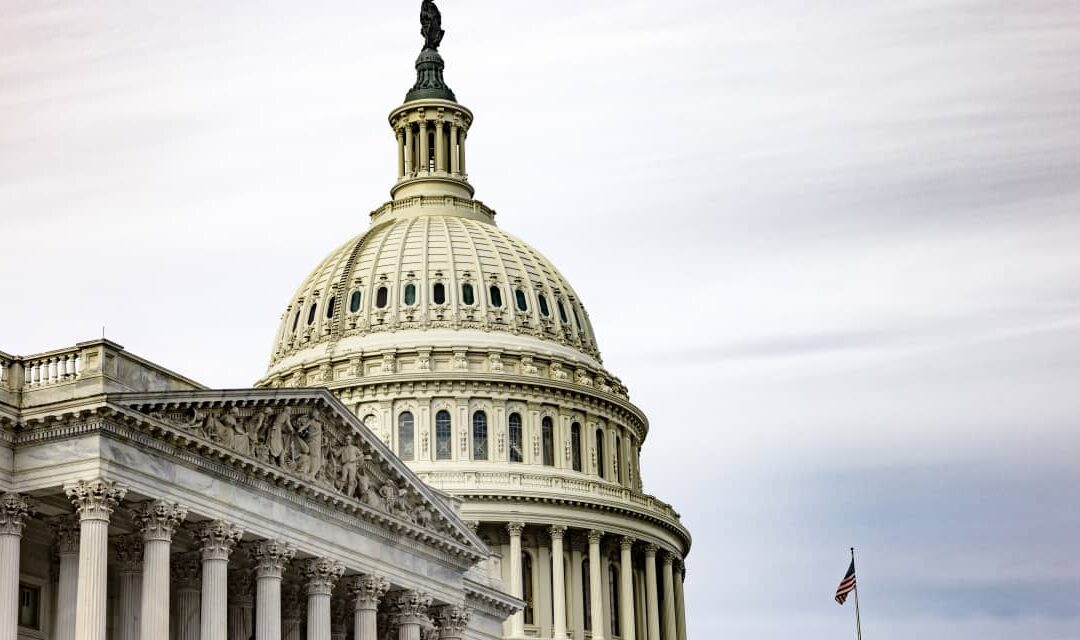A new year often sparks optimism, but in Washington 2024 is starting off with warnings that a partial government shutdown could hit in a couple of weeks.
The Democratic-run Senate and Republican-controlled House of Representatives face a Jan. 19 deadline to make a funding deal that would prevent a partial shutdown.
That’s because a short-term, two-tiered bill that Congress passed in November extended government funding for some agencies and programs until Jan. 19, while continuing funding for others until Feb. 2.
House Speaker Mike Johnson, the Louisiana Republican who has led the chamber since October, has said he’s done with short-term spending bills, known as continuing resolutions or CRs. However, Wolfe Research analyst Tobin Marcus said it looks to be “too late for anything other than a short-term stopgap to come together in time to prevent a shutdown.”
“In any case, we expect that the initial action in January will focus
on whether Johnson is willing to pass a stopgap or if he will choose instead to plow into a shutdown — and we will be watching closely for signals in this regard as Congress returns next week,” Marcus, who is Wolfe’s head of policy and politics, wrote in a Tuesday note.
The Senate is slated to get back to work on Monday, Jan. 8, while the House is due to return a day later.
Stifel’s chief Washington policy strategist, Brian Gardner, said his base case, or most likely scenario, is “a partial government shutdown beginning in late January.”
But “while a shutdown seems likely, investors should focus their attention on other market and geopolitical factors,” Gardner said in a Tuesday note.
That’s because a shutdown’s impacts are “short-term and usually reverse once the government reopens, so the impact on long-term economic activity is minimal,” the Stifel strategist said. “Thus, markets often ignore government shutdowns. For example, during a 34-day shutdown that started in December 2018 and ended in January 2019, the S&P 500
SPX
rose by over 10%.”
From MarketWatch’s archives (September 2023): House returns to face shutdown fears: What does it mean for markets?
The U.S. government departments affected by the Jan. 19 deadline for funding include Energy, Housing and Urban Development, Transportation and Veterans Affairs, while those with a Groundhog Day deadline include Commerce, Defense, Health and Human Services, Homeland Security and Labor.
Beyond the potential shutdown, a divided Washington has been wrestling over a possible $110 billion supplemental spending package that would involve wartime aid for Israel and Ukraine as well as money for securing the southern U.S. border and reforms to immigration policy.
Related: Russian steps up winter bombardment, lobbing missiles at Ukraine’s biggest cities
Wolfe’s Marcus said there is a “fairly high probability that this whole effort collapses, delivering a downside surprise for the defense sector
ITA,
” adding that immigration policy is a “famously challenging issue for Congress.”
Meanwhile, Stifel’s Gardner said that there “seems to be a consensus in Washington that an aid package will pass,” but that “high hurdles need to be cleared.”
Talks on Capitol Hill will be happening as the 2024 Republican presidential race moves into high gear. The Iowa caucuses are slated for Jan. 15, and New Hampshire’s primary is scheduled for Jan. 23.
Former President Donald Trump is leading in polls, which means there is a “Trump factor” in the congressional negotiations, Gardner said. If the GOP front-runner “opposes the immigration portion of any deal, it will make it difficult for House Republicans to support it,” the strategist said.
The main U.S. stock gauges
DJIA
COMP
were mostly lower in 2024’s first trading day, taking a breather after a 2023 rally that left the S&P 500 just shy of its all-time closing high.








